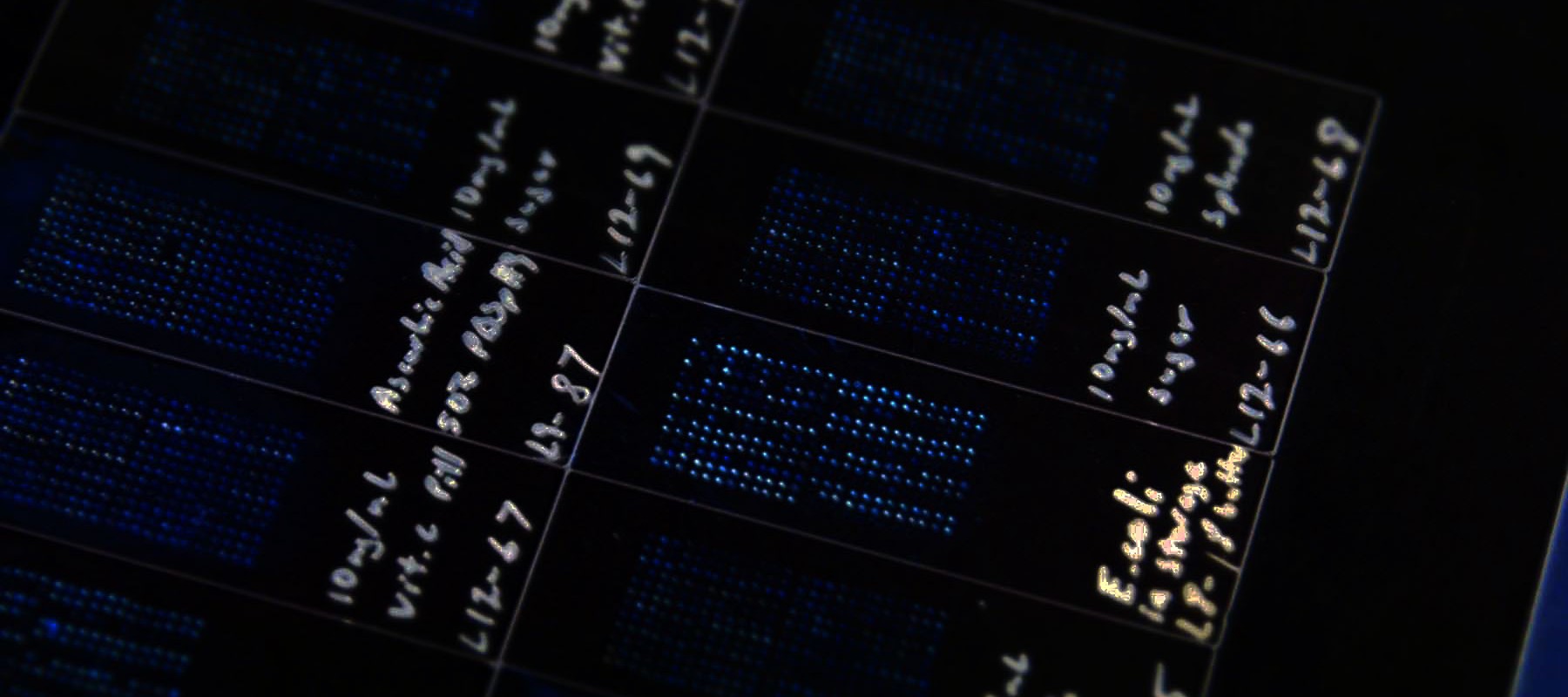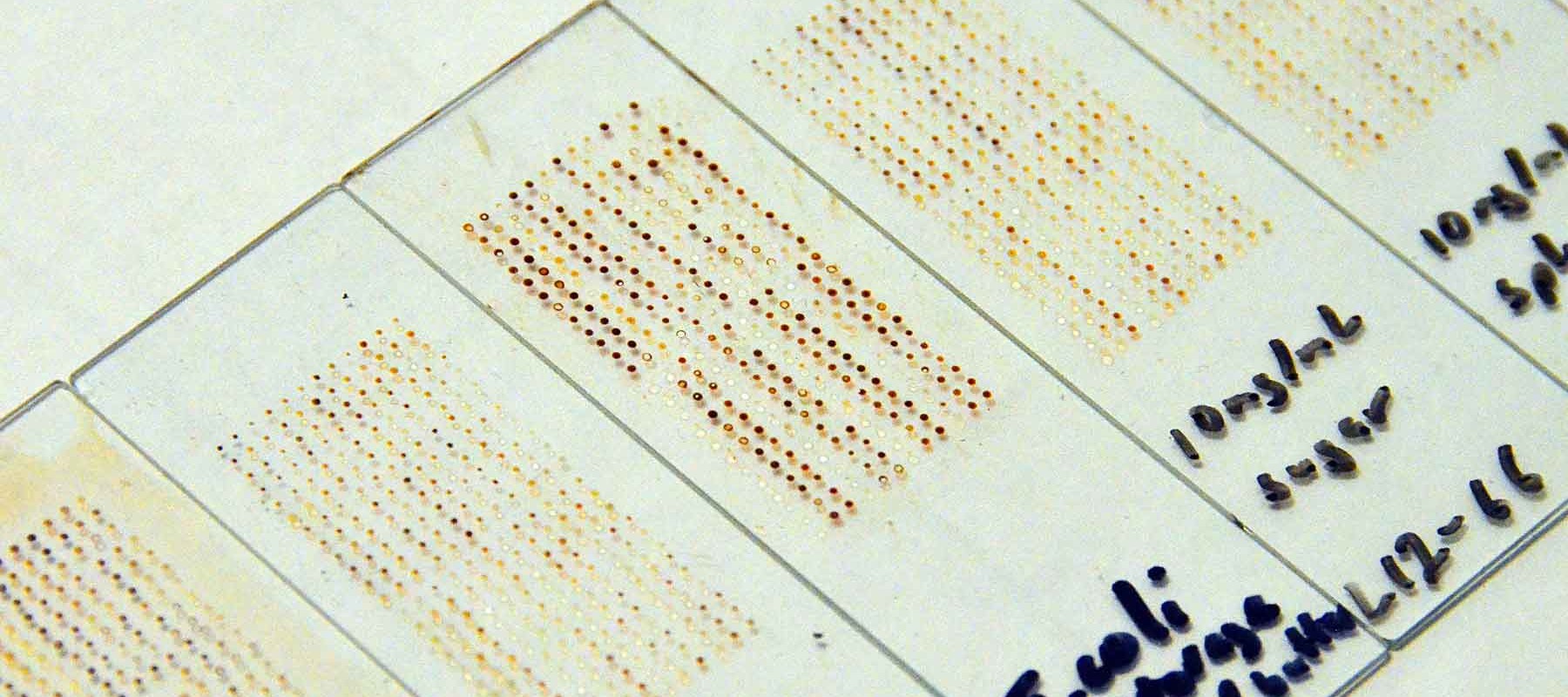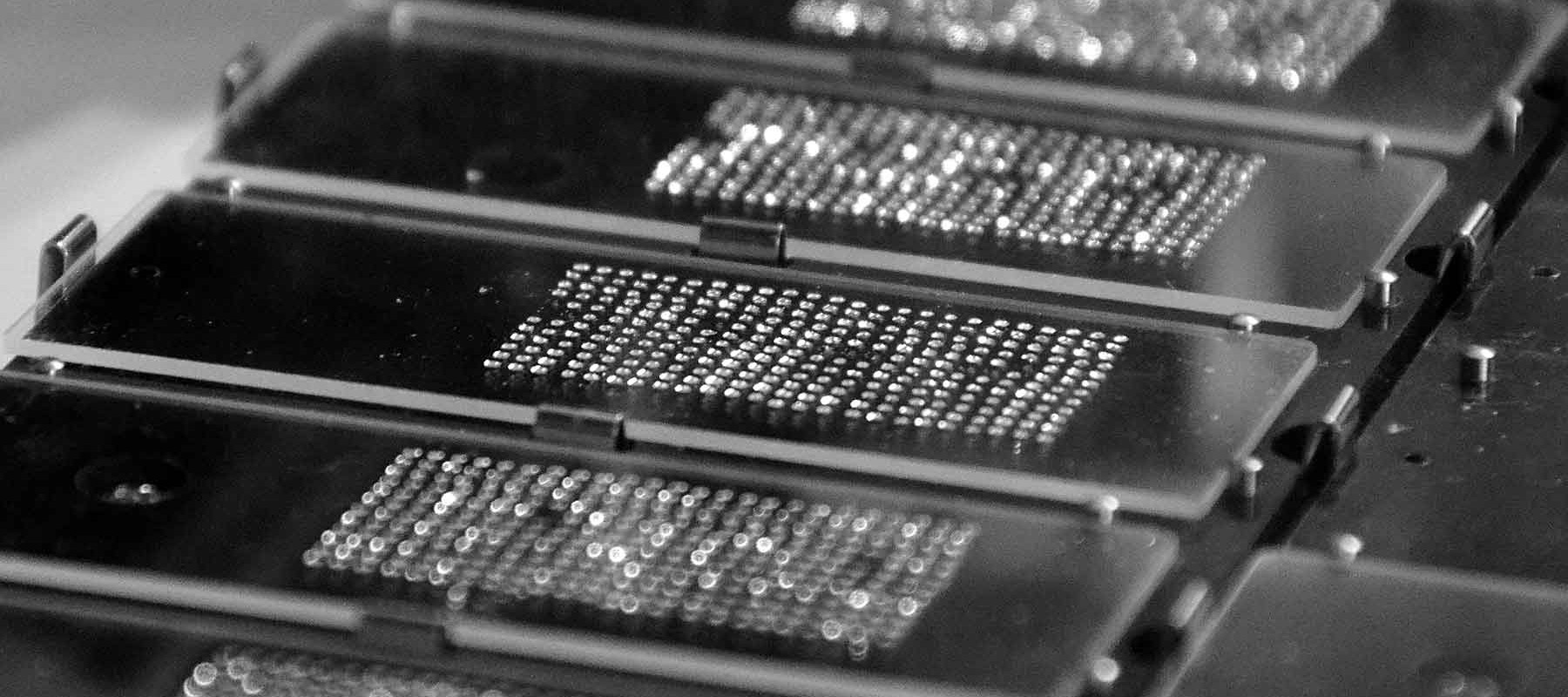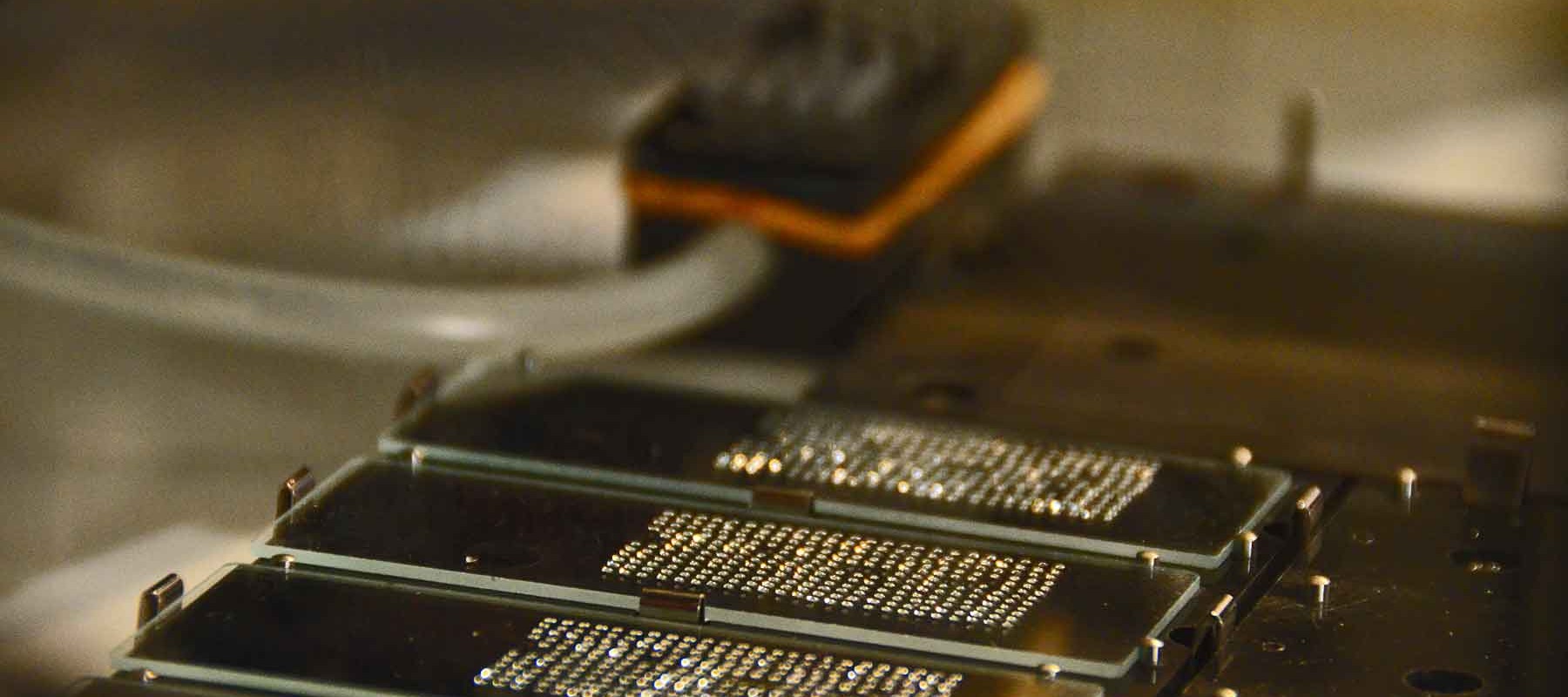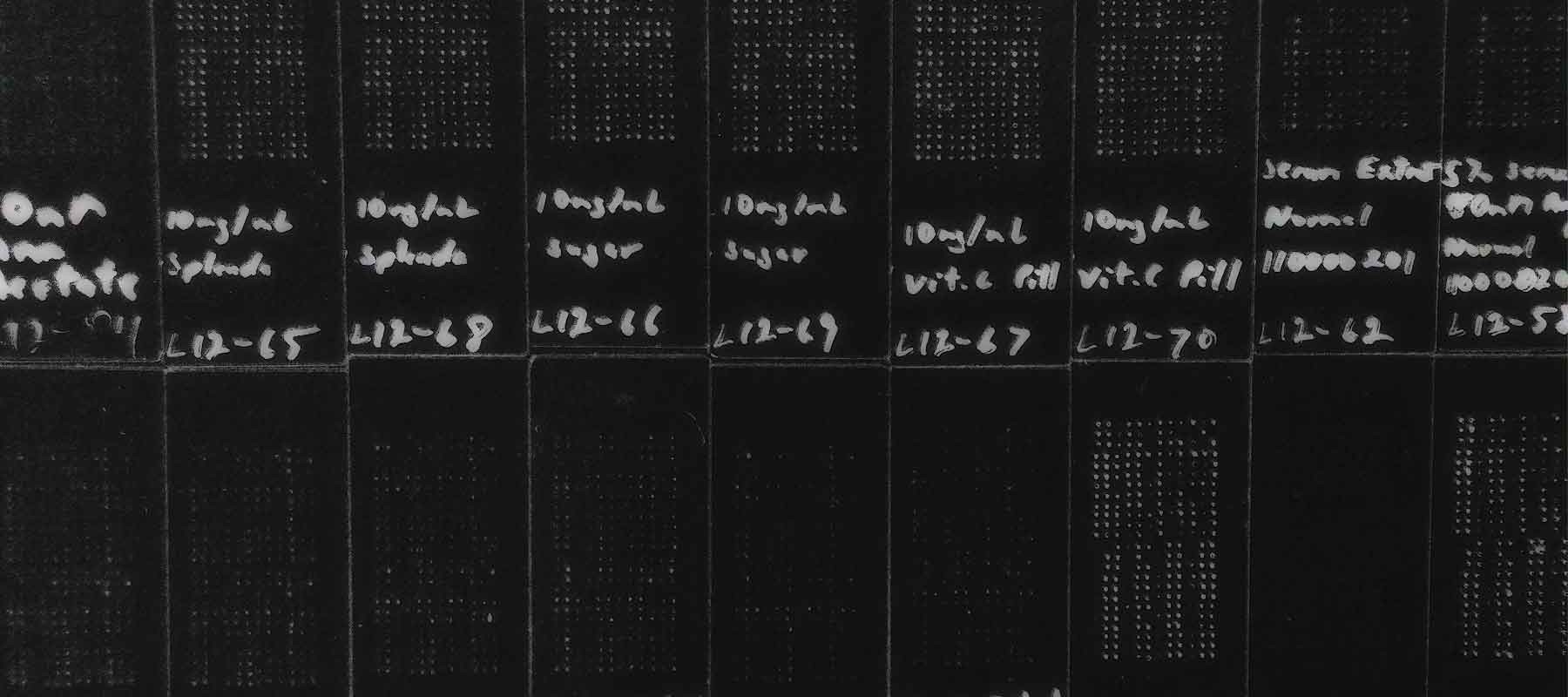How is NuTec different from other clinical tests?
NuTEC is envisioned as a single device diagnosing many diseases as opposed to many individual tests in the hospital each diagnosing a single disease.
How do NuTec signatures work differently from individual tests?
The two are not mutually exclusive. Signatures allow you to ask the open-ended and unbiased question: ‘Is there a problem?’ However, if you have a specific question such as ‘Do I have diabetes mellitus?’ a specific test for glucose levels would make more sense.
Does NuTec detect DNA, RNA, proteins or small molecules?
NuTec is unbiased and reacts with all 4 classes. The resulting spots on the NuTec are not DNA, RNA, proteins and small molecules but rather the colorimetric products of these chemical reactions.
How is the NuTec signature generated?
A mixture of molecules in a sample applied to the NuTec undergoes chemical reactions upon heating which then result in a visual pattern of dark and light spots. By design, each spot on the NuTec reacts differently with the sample molecules. Physicochemical diversity among the spots is important for NuTec to search through a large enough chemical space in the sample. This diversity is the basis for generating the spot pattern.
What is the NuTec signature?
The NuTec signature is analogous to a hash function. A hash function takes information of arbitrary length (e.g. a large image file) and generates an output signature with a drastically smaller length (e.g. a string of 32 characters). The NuTec is the chemical version of a hash function. Just like a hash function, NuTec takes dimensionally large chemical information in a sample and reduces it to a chemical hash of X defined spots. Hash signatures are a great way of telling if a file downloaded off the internet matches the original. In the same way, Entopsis will be matching your chemical hash signature to a database of pre-validated hashes.
Are there other current approaches using signatures and how is NuTec different?
What sets NuTec apart from other platforms is the chemical hash concept. Chemical hashing does several things. It transforms chemical information into colorimetric information which can be acquired by a scanner or phone camera. It lets NuTec survey a chemical space which is unimaginably complex. The resulting hash signature is compact and easily amenable to database storage and template matching.
Is Entopsis ISO certified?
Yes, Dr. Tingjun Lei and the Entopsis manufacturing team have achieved ISO 9001:2015 and ISO 13485:2016 certification for the manufacture and sale of NuTec devices.
Unmasking the Future of Cancer Detection: 10 AI Startups Leading the Charge
LinkedIN post from: Lachezar Zanev
Welcome to the future of healthcare, where Artificial Intelligence (AI) and cutting-edge technology join hands to make a significant impact on patient outcomes. As we ride the wave of this digital health revolution, one of the most promising areas of application is cancer detection and treatment. Early detection of cancer is paramount to improving survival rates, and AI holds immense potential to accelerate this process.
Across the globe, a new breed of startups is harnessing the power of AI to pioneer innovative approaches for early cancer detection. These companies are leveraging advanced algorithms, deep
OpsisDx highlighted in peer-reviewed journal
The novel scientific concept behind OpsisDx™, developed by Entopsis Inc., is outlined in a recently published peer-reviewed scientific manuscript in the Royal Society of Chemistry Analyst journal. In addition, OpsisDx™ was selected by the editors of the journal to be featured on the journal’s cover.
The manuscript, entitled ‘A colorimetric chemical tongue detects and distinguishes between
multiple analytes’, demonstrates how photoinitiators can be used to profile simple and complex chemical mixtures using an array of polymers with distinct binding properties. The OpsisDx™ research team is exploring whether this approach can can be the basis for a multi-disease detection platform that may
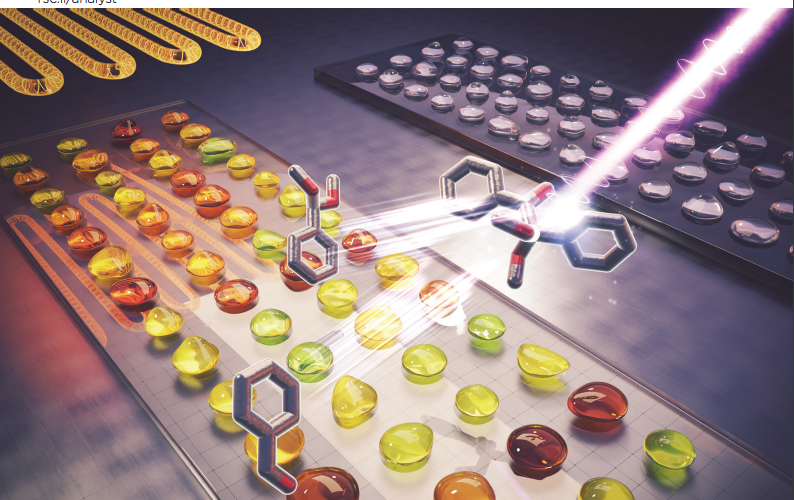
PCRopsis LLC launches Oral Rinse: a unique device for the collection and transportation of oral samples with distinct advantages
Oral samples offer a simple, low cost, and user-friendly means of collecting oral samples for a variety of applications; such as, DNA sequencing, respiratory virus testing, oral cancer detection, toxicology, and many others. These samples can be conveniently collected at home and shipped to testing sites.
Key Advantages of PCRopsis™ Oral Rinse over Alternative Approaches:
1. Simple sample collection: safe ingredients allow for self collection of oral samples by swishing the liquid in your mouth – no need for swabs, secondary inactivating reagents, careful mixing of saliva with reagents, or pipettes to transfer small volumes
2. Keeps RNA stable at room


